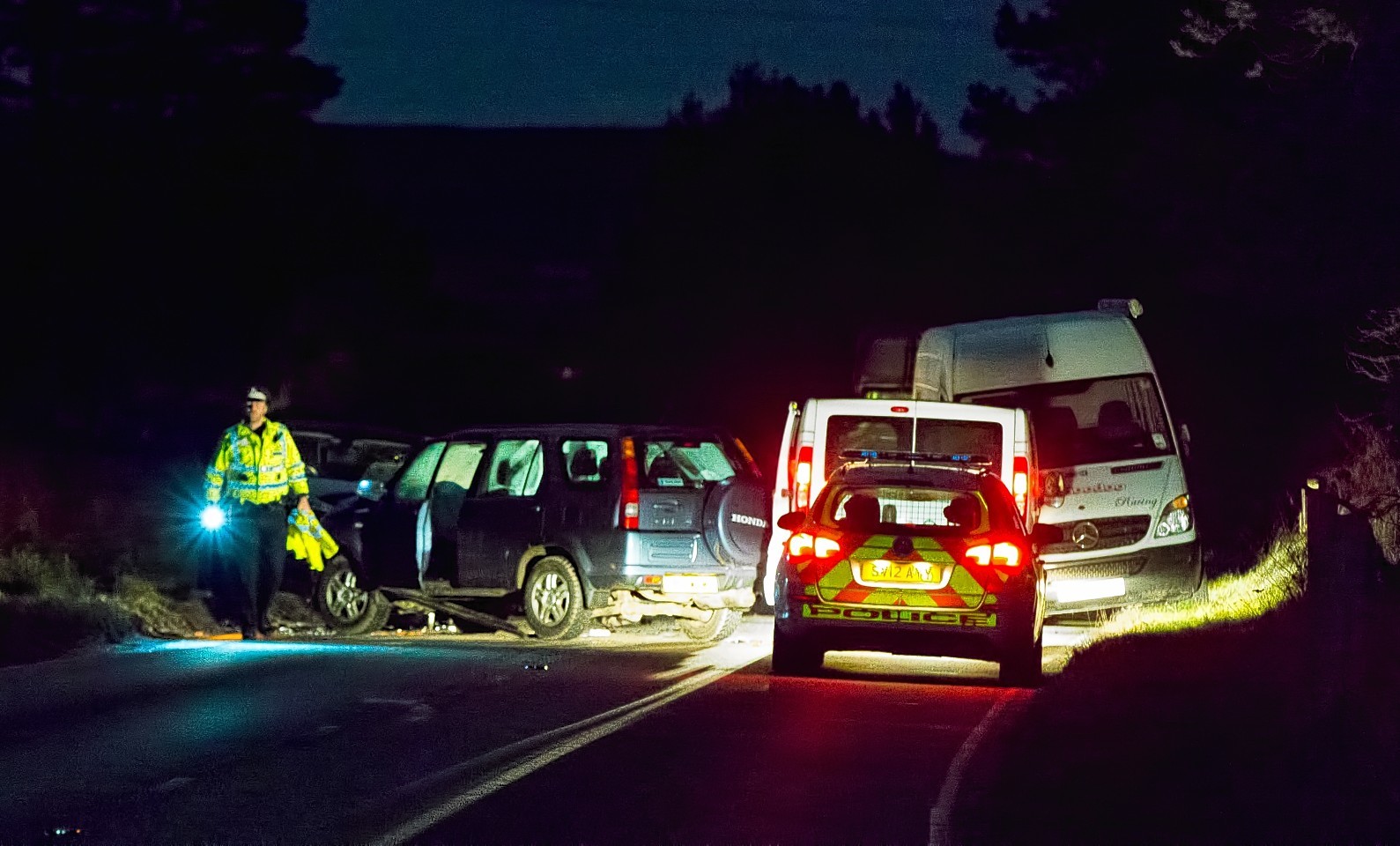A total of 25 people have been killed on Aberdeenshire and Moray’s roads in just nine months – one more than the toll for the whole of the previous year.
Exclusive new figures from Police Scotland show there have already been 25 fatalities in the region since April 1, compared to 24 for the full 2013/14 period.
The figure represents a 150% rise on the total for 2012/13 when 10 people died.
Of the recent fatalities, almost half were people aged 55 and over, despite a common conception that it is the youngest road users, aged 17-25, who are most at risk from an accident.
The rise in deaths has coincided with a fall in the number of people seriously injured in crashes. Over the last nine months, 162 people were badly hurt, with the highest number of casualties in the 26-55 age bracket.
Last night police welcomed the drop in serious crashes, but said it was “hugely concerning” that the death toll had risen. Safety campaigners also urged motorists to “respect the roads”, especially during the winter months.
Senior officers vowed to continue patrolling the region’s six danger roads – identified using accident data and by observing drivers – to get tough on those who continue to flout the law and risk their own and other people’s lives.
The six priority areas are the A90 Dundee to Fraserburgh road, at the Stonehaven-Aberdeen, Balmedie to Ellon, and Toll of Birness to Fraserburgh stretches; the A96 Aberdeen to Inverness road, from the airport roundabout to Huntly; the A944 Westhill to Alford road; and the roads linking Elgin, Buckie, Keith and Dufftown.
Operation Cedar (Challenge, Educate, Detect and Reduce) was launched last year in an effort to tackle the number of crashes on the roads, by increasing patrols and raising awareness of health issues that affect people behind the wheel.
Superintendent George Macdonald said: “In general, serious and slight injury collisions are declining but it’s a concern that we are still seeing people losing their lives on the roads.
“As part of Cedar, we’ve identified six primary routes that account for a significant percentage of our serious and fatal road collisions and are carrying out visible and proactive patrols of them.
“Clearly we can’t be there all the time, and there are certain variables that policing will have little or no control over – for example, a person’s fitness to drive, how a vehicle is driven in challenging road conditions, and indeed driving at speeds which are in excess of the prevailing conditions or speed limit.”
From April 1 to November 30, a total of 14,133 vehicles were stopped, with officers talking to motorists about their driving or vehicle.
On the busy A90, a total of 2,599 vehicles were stopped, while a further 2,455 drivers were spoken to on the A96.
More than 2,500 drivers were also stopped by patrols on feeder routes, including the A98 Fraserburgh to Fochabers road, the A947 Aberdeen to Banff road and the A952 Mintlaw to Fraserburgh roads.
And despite repeated messages from safety campaigners and the police for motorists to slow down, speeding was the most common offences detected last year.
Councillor Eric McGillvray, chairman of Moray’s Public Protection Partnership, said it was disappointing that the number of fatalities had risen, and encouraged motorists to take more care.
“I’m very disappointed by these figures,” he said.
“I’d reassure people that we are trying to do our best as a safety partnership, but it’s also down to the motorists to take proper precautions on dangerous roads.
“People should try to respect the road and be aware of the dangers, and anticipate dangers, especially when it’s icy.”
Supt Macdonald vowed to continue working with partner agencies, including the three local councils, to reinforce road safety messages.
He said: “There has been significant work between Moray, Aberdeenshire and Aberdeen City councils because we are fully aware that a driver who starts their day in Moray may be driving into Aberdeen and cutting through the three respective local authority areas.
“We’re working to ensure policing, the local authorities and other relevant agencies are joined up and committed to road safety and reducing fatalities on our roads.
“By doing this, we can get a good understanding as to why events have taken place so we can do what we can to prevent future accidents by good policing, roads engineering, education and public awareness.”
